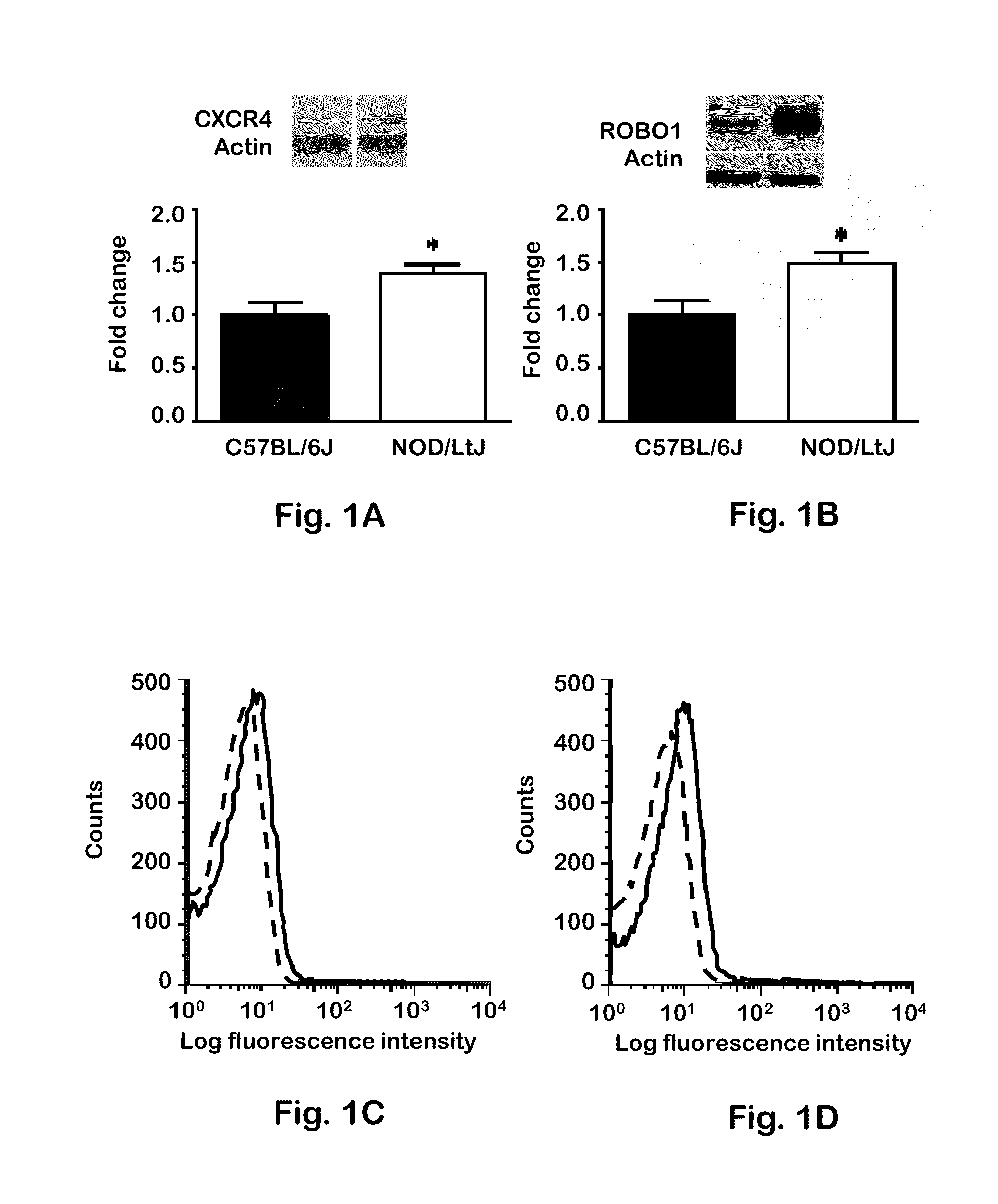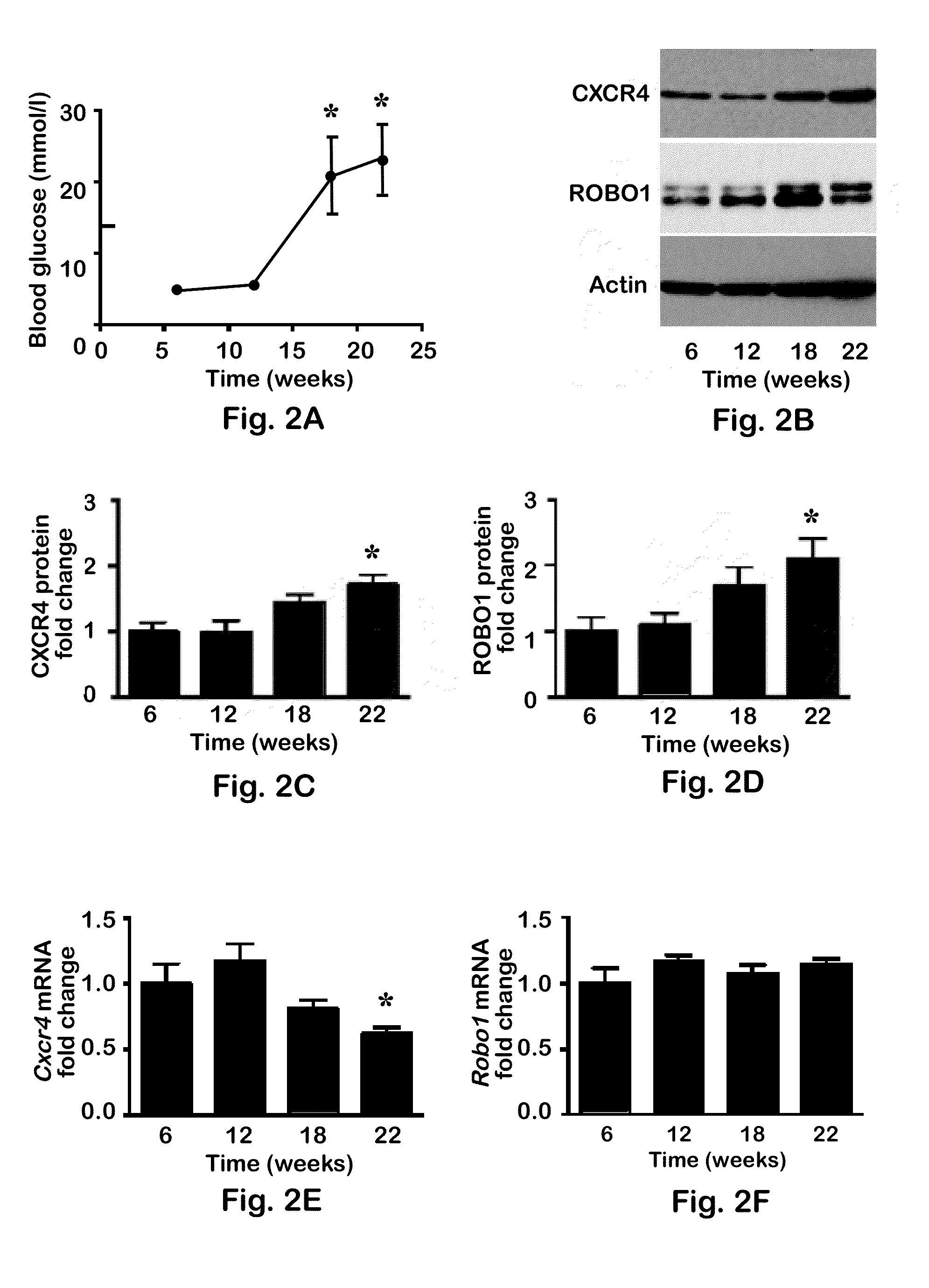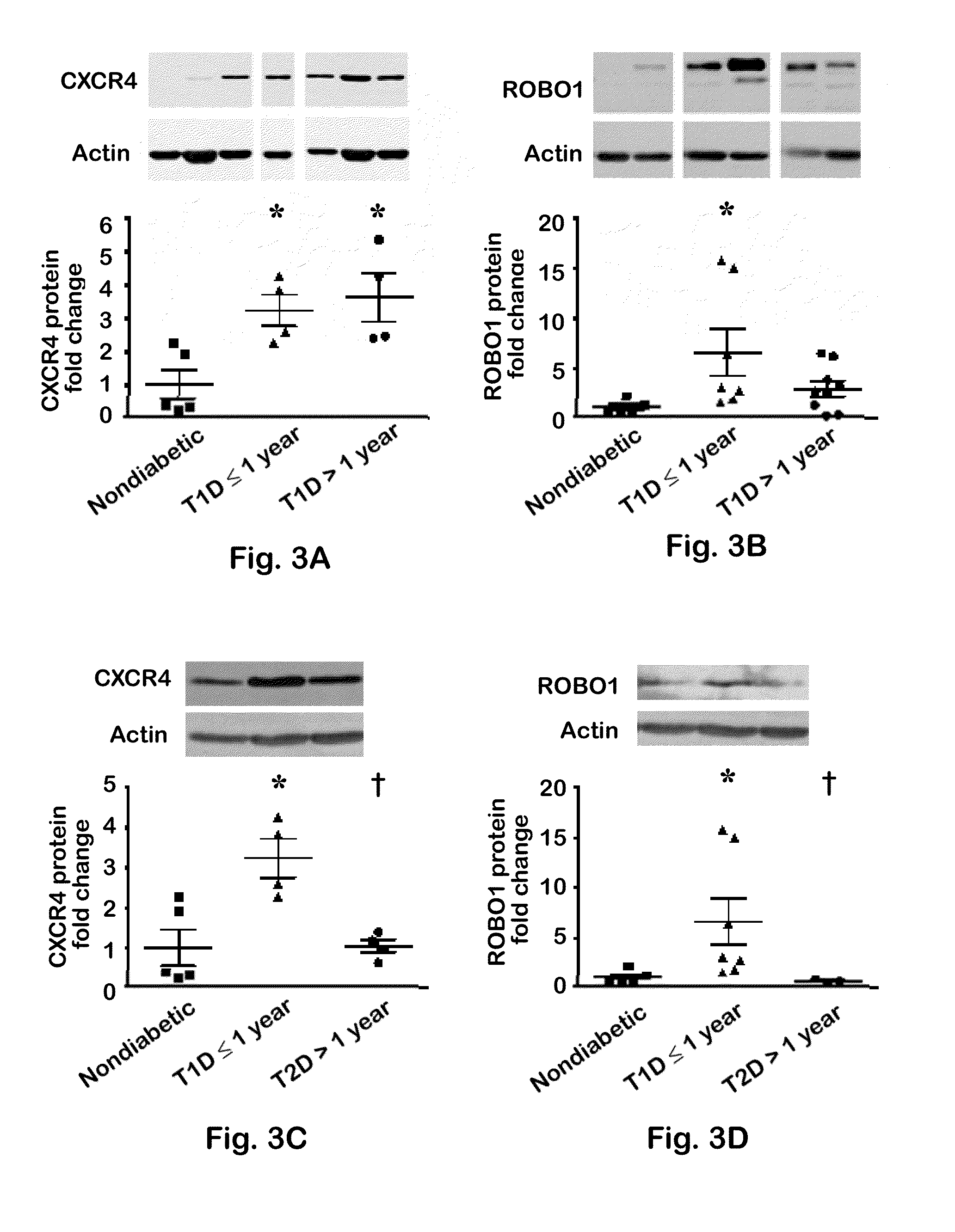CXCR4 and ROBO1 expression as markers for autoimmune diabetes
a type 1 diabetes and robo1 technology, applied in the field of cxcr4 and robo1 expression as markers for autoimmune diabetes, can solve the problems of high false positive and false negative rates, and achieve the effects of reducing t cell detachment, increasing detachment, and increasing resistance to shear-mediated detachmen
- Summary
- Abstract
- Description
- Claims
- Application Information
AI Technical Summary
Benefits of technology
Problems solved by technology
Method used
Image
Examples
example 1
Animals
[0031]Mice were housed at the Louisiana State University Health Sciences Center (LSUHSC)-Shreveport Animal Resource Facility, which is accredited by the Association for Assessment and Accreditation of Laboratory Animal Care, and maintained according to the National Research Council Guide for Care and Use of Laboratory Animals. Experiments were conducted in compliance with the Institutional Animal Care and Use Committee. Female NOD / ShiLtJ, NOD / LtSz Rag1− / −, and C57BL / 6J mice were purchased from the Jackson Laboratory (Bar Harbor, Me., USA). Cohorts of NOD / ShiLtJ mice were killed at 6, 12, 18, and 22 weeks to examine protein and gene expression changes during the progression of autoimmune diabetes.
example 2
T Cell Isolation
[0032]CD3 T cells isolated from splenocytes of female NOD / ShiLtJ or C57BL / 6J mice were negatively selected using the EasySep Mouse T Cell Enrichment kit (Stem Cell Technologies, Vancouver, BC, Canada). To obtain human T cells, blood was drawn from either type 1 (n=16) or type 2 (n=5) diabetic patients or from healthy controls (n=11). Participants gave informed consent, following procedures approved by the Institutional Review Board at LSUHSC-Shreveport (Protocol H08-070). T cells were negatively selected from 20 ml blood using a RosetteSep human T cell enrichment cocktail (Stem Cell Technologies).
example 3
Western Blots
[0033]T cells were isolated as described in Example 3 and lysed in radioimmunoprecipitation assay buffer (50 mM TRIS-HCl, pH 8.0, 150 mM NaCl, 1% (vol / vol) Nonidet-40, 0.5% (wt / vol) deoxycholate, and 0.1% (wt / vol) SDS) supplemented with 0.1 μM leupeptin, 0.3 μM aprotinin, and 1 μM phenylmethylsulfonyl fluoride. Whole-cell protein homogenates (12.5 μg total protein) were loaded onto 10% polyacrylamide SDS gels and electrophoresed. Gels were transferred overnight to Immobilon-P7 (Bio-Rad, Hercules, Calif., USA), and subsequently membranes were blocked for 2 hours with 5% (wt / vol BSA) (ROBO1), or with 5% (wt / vol) non-fat dry milk (CXCR4) in TRIS-buffered saline (TBS). Membranes were incubated overnight at 4° C. with antibodies against ROBO1 (vRobo1; Developmental Studies Hybridoma Bank, Iowa City, Iowa, USA) or against CXCR4 (ab2074; Abcam, Cambridge, Mass., USA) at a dilution of 1:100 (0.27 μg / ml) or 1:500, respectively, in blocking buffer supplemented with 0.1% (vol / vol)...
PUM
| Property | Measurement | Unit |
|---|---|---|
| pH | aaaaa | aaaaa |
| thickness | aaaaa | aaaaa |
| thickness | aaaaa | aaaaa |
Abstract
Description
Claims
Application Information
 Login to View More
Login to View More - R&D
- Intellectual Property
- Life Sciences
- Materials
- Tech Scout
- Unparalleled Data Quality
- Higher Quality Content
- 60% Fewer Hallucinations
Browse by: Latest US Patents, China's latest patents, Technical Efficacy Thesaurus, Application Domain, Technology Topic, Popular Technical Reports.
© 2025 PatSnap. All rights reserved.Legal|Privacy policy|Modern Slavery Act Transparency Statement|Sitemap|About US| Contact US: help@patsnap.com



